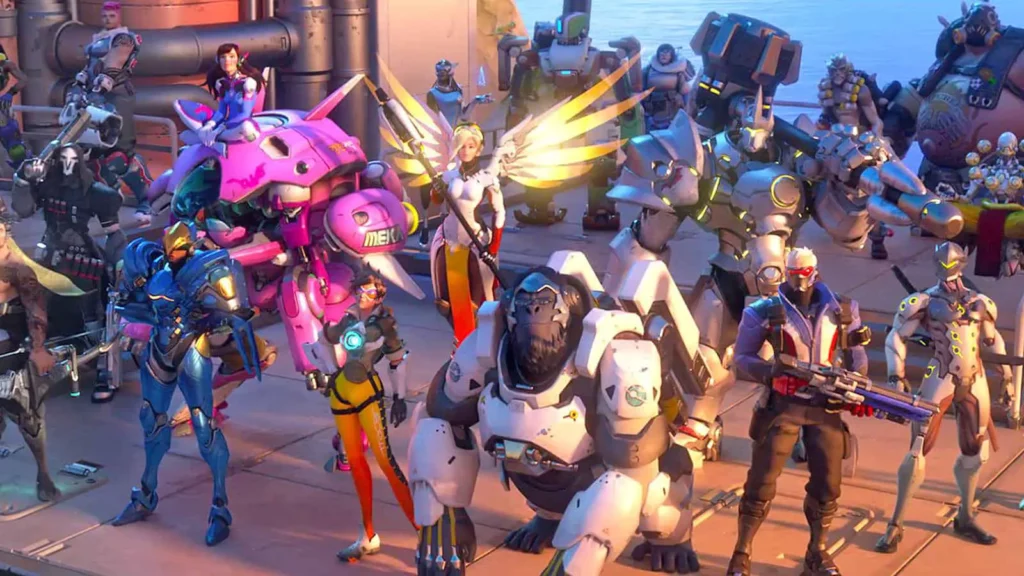If you’re still not convinced about adjusting your Brightness Settings for Overwatch or the display settings, here are the advantages of doing so.
- Increase gameplay performance
- Color will be as close to real life as possible
- Input lag will be reduced
- Less eyestrain
- More immersive gaming experience
As you can see, there are more benefits to adjusting your settings. It only takes a little time and research, but the effects are significant.
Fortunately, we’ve come up with a handy guide to help you with just this. Read on to find out the best brightness settings for Overwatch.
The best brightness settings for Overwatch

Tweaking your brightness settings depends on your preference and setup. But we’re here to give you a guide on how to properly optimize these settings to your benefit.
Here’s our guide:

Brightness – Brightness is the intensity of light coming from a screen. By default, this is set in the middle. Depending on your preference or setup, you might need to slide it to the left to darken it or to the right to make the screen brighter.
Gamma Correction – This option controls the overall brightness of an image. We recommend that you leave it at the default settings otherwise it’s up to your preference.
Contrast – Most people seem to think that contrast and brightness are essentially the same, they’re not. Brightness refers to the overall lightness or darkness of the output while contrast is the difference in brightness between the objects in the image. This means that if you increase the contrast, it makes the light areas lighter and vice versa. We recommend you leave it in the middle.
Color Blind Options – This option is useful for color blind people either partial or full. But it can also noncolor blind players in distinguishing enemies from allies. Our suggestion is to set the color as neon blue for allies and yellow for enemies.
The best graphic settings for Overwatch

Aside from the brightness settings, there are more display settings you can tweak for more optimized gameplay.
Here are they:
Resolution – The recommended resolution is 1920 x 1080 with the highest refresh rates as possible.
Field of View – We recommend using the maximum of 103 which allows you to take advantage of the maximum view.
Aspect Ratio – Most computers will default this at 16:9. However, the game supports 16:10 and 21:9 aspect ratios as well.
Triple Buffering – We recommend turning this off since this isn’t a necessity.
Reduce Buffering – This should be turned on since this allows the game to buffer fewer frames if you don’t mind the quality to lower a bit.
Display Performance Stats – If this is turned on, the game will display specific stats such as frame rate and network ping on the upper left corner of your screen. This is handy if you want to test your computer’s performance, otherwise, turn it off.
Limit FPS – This should be set to CUSTOM and based on your computer’s capabilities.
Frame Rate Cap – This is only available when you set your Limit FPS settings to custom. It’s recommended to go as high as you can as long as your GPU doesn’t suffer.
Graphics Quality – We recommend setting this to low and then changing certain settings in the ADVANCED option.
Texture Quality – We recommend setting it at low.
Texture Filtering Quality – We recommend setting it at low.
Local Fog Detail – We recommend setting it at low.
Dynamic Reflections – We recommend setting it off.
Model Detail – We recommend setting it at low.
Effects Detail – We recommend setting it at low.
Lighting Quality – We recommend setting it at low.
Antialias Quality – We recommend setting it at LOW – FXAA.
Screenshot Quality – We recommend setting it at 1X RESOLUTION.
Local Reflections – We recommend setting it off.
Ambient Occlusion – We recommend setting it off.
Final Thoughts
Remember that this only serves as a guide. You can always refer to our guide whenever you find yourself having problems.
Also, it’s ideal to experiment with what’s working with you and your PC if some settings don’t work.
Further Reading:







